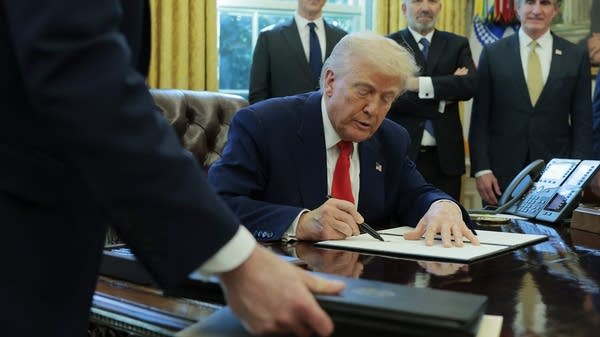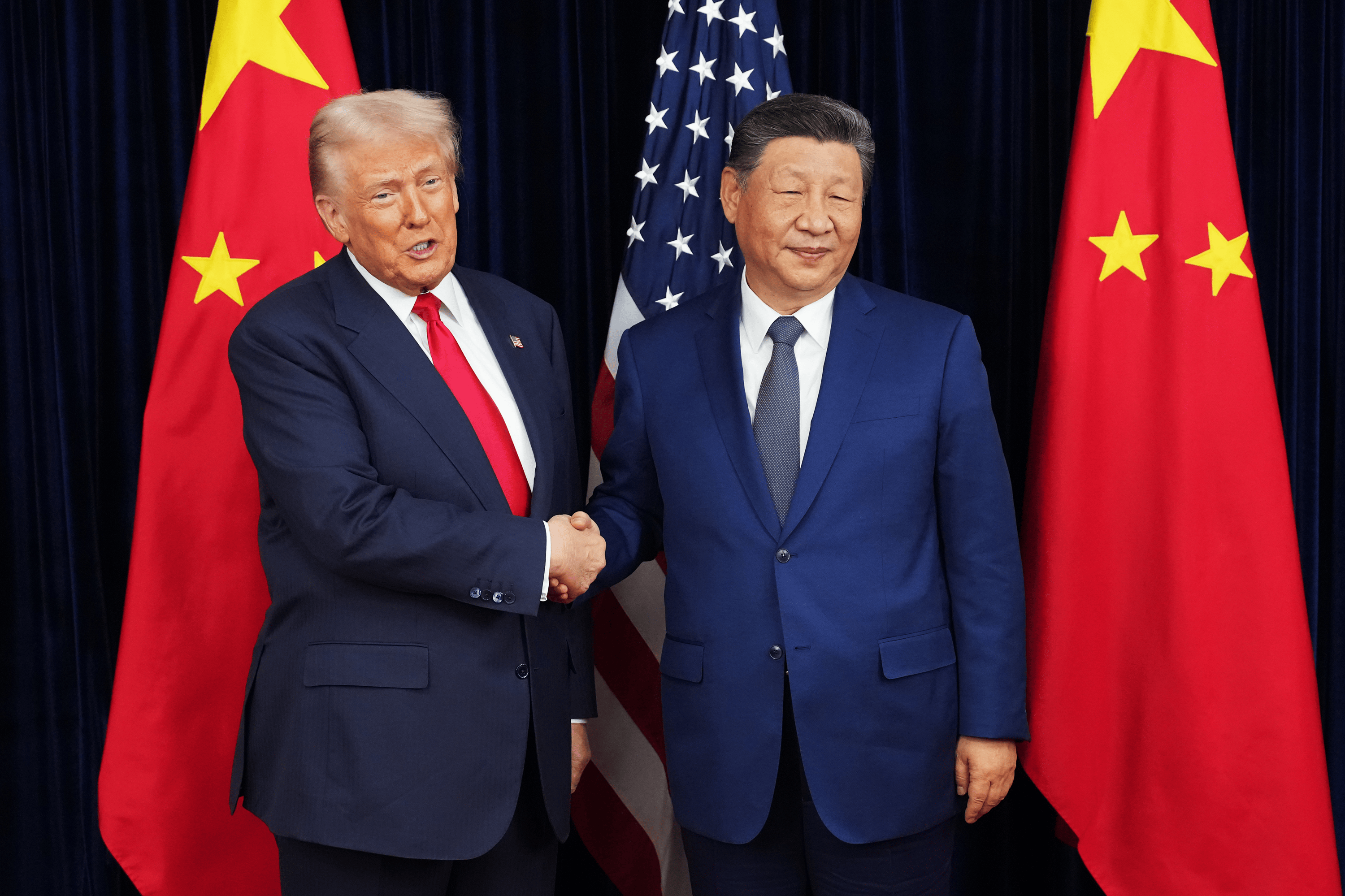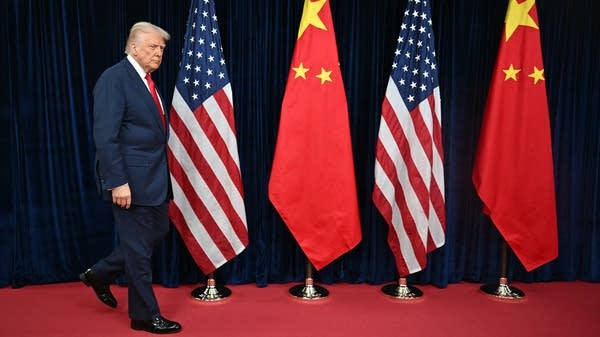Lower tariffs are still tariffs
A 10% or 20% tariff is it’s still a significant tax on imports — that Americans will pay.

We’re now less than a week out from the end of President Donald Trump’s 90 day pause on those tariffs he announced back in April. And we’re still waiting for word on those 90 deals he promised in 90 days.
He did post to Truth Social on Wednesday that he’s reached an agreement with Vietnam: A 20% tariff on all Vietnamese goods and 40% on transshipments — those are goods made in other countries, like China, that go through Vietnam.
Compared to the 145% tariff Trump briefly put on goods from China, and the 46% he threatened for Vietnam, 20% almost sounds like no big deal. But it’s still a substantial tax on imports that Americans will pay.
Adam Hersh, senior economist at the Economic Policy Institute, said a 20% tariff is significant. As is the 10% tariff Trump announced on goods from the U.K.
“It still puts us at the highest that tariffs have been in more than a century,” Hersh said.
And, he said, it’s still going to be hugely disruptive to the U.S. economy.
Erin McLaughlin, senior economist at The Conference Board, said tariffs will drive up costs across the economy.
“A tariff is a tax on the goods that come into the U.S., and ultimately, that tax has to be paid by someone,” she said. It will be paid by U.S. importers and retailers, and eventually by us, the consumers.
Even if most tariffs end up being “just” 10% or 20%, “I do think that we will still see this be inflationary for the U.S. consumer,” McLaughlin said.
How much we’ll notice the coming tariff-related price increases will likely depend on what we’re buying, said Bill Reinsch, senior adviser at the Center for Strategic and International Studies.
“If you're buying a $10 T-shirt with a 20% tariff, it's going to be $12,” he said. “Are you going to stop buying the T-shirts because it's $12 instead of $10? I don't know.”
But if you’re buying an appliance or a car, it could increase the price by hundreds or thousands or dollars, which might make you think twice.
What 10-20% tariffs may not do, he said, is get companies to spend lots of money to move manufacturing back to the U.S.
“If you're going to move here because the tariff is too high for you to export here, then if you lower the tariff from 46% to 20% … that alters your economics. And then you have to think about, well, you know, is it still worth it to move?” Reinsch said.
Or, can I just eat part of the 20% tariff and still be competitive?













